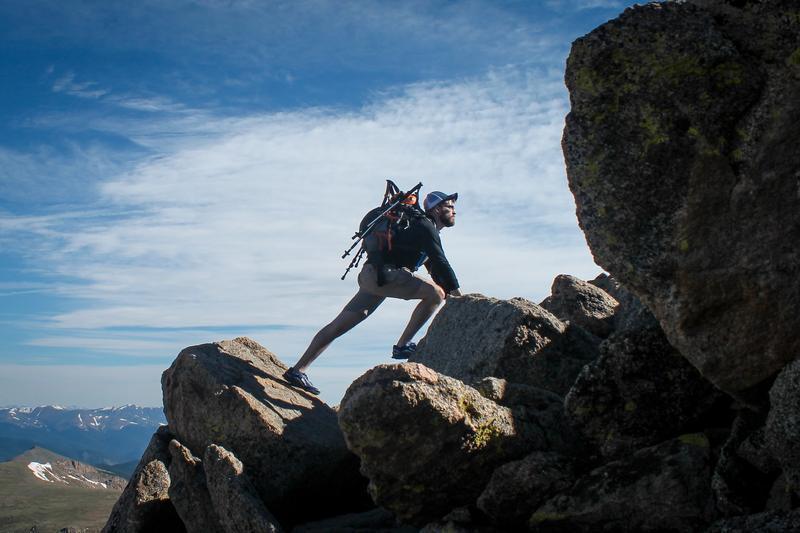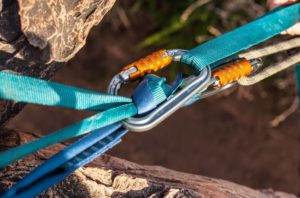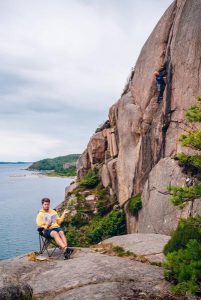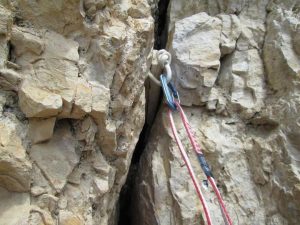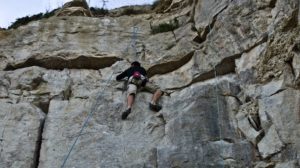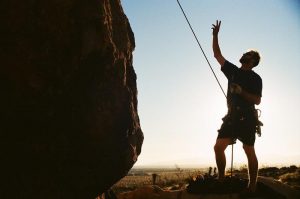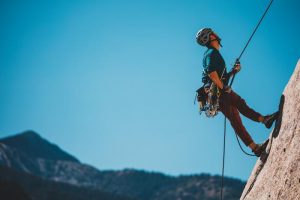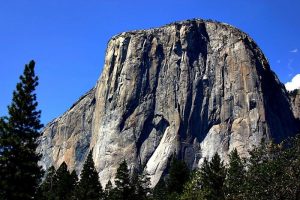If you have any plans to climb a big wall or do a long route in the mountains, you need to plan to bivouac. A bivouac is simply a no-frills camp in the open at the base of a route, on a route, or on the descent of a climbing route. Bivouacs are either planned or unplanned.
Bivouac to Get an Early Start
Lots of climbers plan to bivouac when they are making a fast and light ascent in the high mountains.
If you are doing a big climb like Syke’s Sickle on Spearhead or The Diamond in Rocky Mountain National Park or a big peak at Grand Teton National Park, you need to start climbing at sunrise to get up your route and off the top before the afternoon thunderstorms roll in. With a six- or seven-mile approach, you would have to leave the parking area at 2 o’clock in the morning to reach the cliff base by sunrise. It’s usually easier to hike into the cliff the afternoon before and bivouac or bivy at the base of your chosen route.
Essential Items for a Planned Bivouac
If you’re making a planned bivouac, you can bring enough essentials so that you will have a comfortable and warm night. Essential items to carry are an ultralight tarp; a lightweight sleeping bag or bivy sack; extra clothing, including a hat, gloves, and jacket; a light stove like a JetBoil; and food.
Essential Shelter and Insulation
A tarp provides necessary shelter from rain and storm and is easy to set up with trekking poles and four stakes.
Some climbers prefer to carry a bivy sack-a lightweight compact shelter for one person rather than a tarp. A sleeping bag is good but if it weighs too much, then bring a half-bag. Some climbers use their pack as insulation for their legs and butt instead of a sleeping bag. Warm clothes are essential since it can get cold at night.
Unplanned Bivouacs can be a Problem
It is the unplanned bivouacs that create havoc in your life. If you are climbing a long rock route or perhaps a mountain peak, you might get caught in darkness during the descent and have to spend the night outside. Unplanned bivys happen for lots of reasons-a slow climbing partner, getting off route, getting a late start, having to deal with a jammed or dropped rope, or getting an injury like an ankle sprain.
Be Prepared for an Unplanned Bivouac
Unplanned bivouacs don’t have to be a big problem if you have planned ahead and brought some essential gear on your climb, but if you haven’t prepared for that bivouac then you might have a very uncomfortable night. Low-elevation bivouacs in summer can be pleasant and even comfortable, just a minor glitch in your plans, but if you are at high elevations in a storm with rain, wind, and even snow, then your unplanned bivy can be very serious.
Bring the Ten Essentials
Never underestimate the route you are climbing, especially if it’s in the high mountains or in places like Yosemite Valley where the cliffs are tall and the routes are long. You need to preplan for a possible bivouac by bringing all of the Ten Essentials in your pack. The trick is to figure out how much essential survival gear to carry. It’s best to err on the side of bringing too much rather than too little.
Basic Gear for an Unplanned Bivouac
Here is the basic gear for each climber for an unplanned bivouac: long pants; long-sleeve shirt and fleece pullover; rain jacket and pants; gloves; hat or balaclava; headlamp with spare bulb and new batteries; matches, lighter, and heat-tabs to light a fire; energy bars and extra water; and an emergency space blanket. An ultralight small tarp can also be a lifesaver if it’s raining. Keep your survival gear in your climbing pack so you don’t get separated from it during descent or at different belay stances.
Tips for a Comfortable Unplanned Bivouac
If you have to make an unplanned bivouac on a route, don’t continue climbing until it is dark. Instead stop while it’s still light, especially if you are on a ledge, and find a dry comfortable spot for the night. Take off wet socks and boots and put on dry socks if you have an extra pair. Put on all of your warm clothes with the rain shell over the top for both insulation and protection from the weather. Wrap yourself in the emergency blanket, which offers protection from both rain and cold. Also, don’t be shy but huddle with your climbing partner if it is cold so you both can generate heat and survive to see the morning sunrise.
Be Prepared for a Forced Bivouac
It is easy to attempt a long climbing route and find that your partner and you are not up to the challenge. It is great to try to do one-day ascents of grade IV and V routes, especially if you are skilled and fast. These are routes like Royal Arches, the Cathedral Rocks climbs, and the South Face of Washington Column in Yosemite Valley; Prodigal Sun, Touchstone Wall, and Iron Messiah in Zion National Park; or Epinephrine at Red Rocks. But occasionally the stars just don’t line up and you get caught by darkness high on the wall or on the descent route and have to bivouac.
Easy to Lose Time on a Long Route
When you are doing a long route, stuff just happens. Maybe you get off route and lose valuable time; your partner comes down with some intestinal bug halfway up; the approach hike takes longer than you anticipate and you get a late start; the rope gets jammed in a tight crack; a late rain storm wets the rock, forcing you to wait until it dries enough to climb; or you get a hand injury or sprained ankle.
Do You Bivouac or Rappel Off?
If any of these mishaps occur, it is time to make a decision—do you go for the top and risk having to bivouac or do you turn tail and make a rappel retreat down the wall? There is nothing wrong with either decision. Make the most prudent choice given available daylight, weather conditions, and how prepared you are for a forced bivouac. If you are caught out in the elements on a bivy, a lack of preparation by not carrying extra survival gear can turn a weak storm or cold wind into a life-threatening situation.
Be Prepared for a Forced Bivouac
The best way to be comfortable and survive a forced bivouac high on a cliff or mountain is to be prepared. The most important thing is to carry enough clothing to stay warm and dry if the weather is cold and wet. Carefully pick lightweight clothes, including a raincoat and pants, which can also be used for wind protection, a warm hat or balaclava, and gloves. If you have room in your climbing pack, also toss in a fleece pullover. If you are climbing during warm months, bring ultralight gear; if it is during colder periods, bring temperature-appropriate clothes.
Bring Warm Clothes, Headlamp, Matches, and Food
Use high-quality gear. Do not rely on down or cotton garments, which lose insulating properties when wet. Instead bring and wear wool, polyester, polypropylene, synthetics, and other new fabrics which stay warm when wet; most, except wool, also dry quickly. A lightweight nylon shelter, bivy sack, or emergency blanket keeps you warm and dry on a damp night. Also, bring a headlamp with an extra bulb and new batteries. It is useful for signaling, climbing and descending in the dark, and finding anchors. Bring matches or a lighter and heat tabs to make a fire for warmth. Lastly, bring enough food and water.
Keep Your Survival Gear with You
It is important to keep your extra survival gear with you rather than with your climbing partner, especially near the top of the cliff or if darkness is falling. It is easy to get separated and if you have your gear, you can avoid dangerous consequences like hypothermia.
Find a Bivy Sport Before It’s Dark
Remember that if you do have to bivouac either on the climb, summit, or descent route, you will probably have an idea that you will be spending the night outside at least an hour beforehand. Make a plan. Talk about the situation and what to do with your partner. Get on the same page with each other. Do not continue climbing until it is pitch dark, instead find a sheltered bivouac spot and get settled in before night. You can get comfortable, warm, and safe so that you can finish your climb the next morning.

